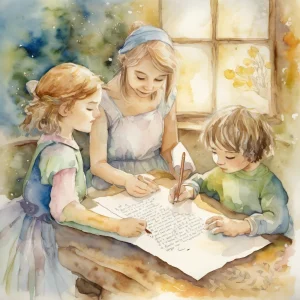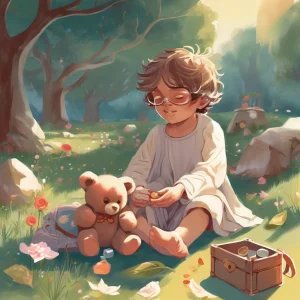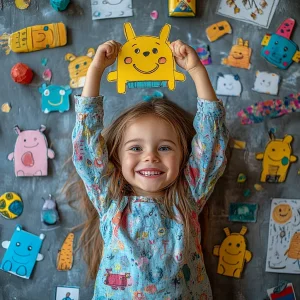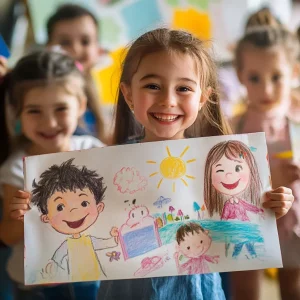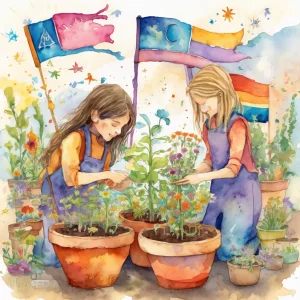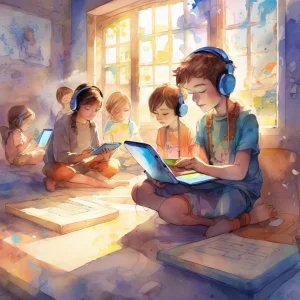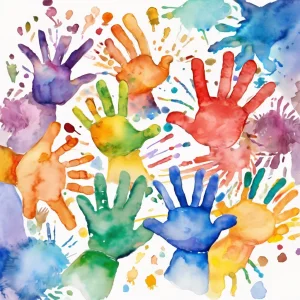Activity
Similar Activities
Gratitude Journey: Writing Thank-You Notes Experiment
Children’s Age: 6–8 years
Activity Duration: 10 – 20 minutes
A creative activity for children aged 7-8 to write thank-you notes, enhancing cognitive and communication skills.
Activity Duration: 10 – 20 minutes
Sensory Treasure Hunt: A Magical Exploration Journey
Children’s Age: 0 month – 6 years
Activity Duration: 10 minutes
Let's go on a Sensory Treasure Hunt! We will use our senses to explore different items like textures, scents, and sounds. You can feel, smell, and listen to each item while blindfo…
Activity Duration: 10 minutes
Sensory Texture Hunt for Developing Skills
Children’s Age: 4–7 years
Activity Duration: 5 – 10 minutes
Let's go on a Sensory Treasure Hunt! We will explore different textures like smooth stones, soft feathers, and rough sandpaper. You can use blindfolds for an extra challenge if you…
Activity Duration: 5 – 10 minutes
Little Desk Heroes: Turning Everyday Desk Items into Storytelling Characters
Children’s Age: 4–10 years
Activity Duration: 10 minutes
Let's have fun with storytelling using stationery characters! Gather paper, pens, pencils, markers, and stationery items like paper clips and sticky notes. Kids can create characte…
Activity Duration: 10 minutes
Magical Storytelling: Create Together with Friends
Children’s Age: 4–6 years
Activity Duration: 15 – 30 minutes
In the Create a Story Together activity, children will explore their creativity, language skills, and teamwork. Get small pieces of paper, colored pencils, and a container ready. K…
Activity Duration: 15 – 30 minutes
Whispers of the Blossoming Earth Journeys
Children’s Age: 11–15 years
Activity Duration: 50 – 55 minutes
Embark on the "Around the World Planting Adventure," a gardening activity designed for children aged 11 to 15. Through planting seeds from different countries, kids will learn abou…
Activity Duration: 50 – 55 minutes
Enchanted Sensory Bottle Exploration for Little Ones
Children’s Age: 6 months – 1.5 years
Activity Duration: 5 minutes
Engage your child aged 6 to 18 months in a sensory bottle exploration activity to boost their communication, motor skills, and social-emotional development. Create a sensory bottle…
Activity Duration: 5 minutes
Garden Sensory Walk: A Baby's Nature Journey
Children’s Age: 0 – 3 months
Activity Duration: 10 minutes
Explore the sensory walk in the garden with your infant aged 0 to 3 months for a calming and stimulating experience that encourages sensory exploration and communication skills in …
Activity Duration: 10 minutes
World Wonders: Around the World Dance Party
Children’s Age: 2–3 years
Activity Duration: 15 minutes
Introduce children aged 24 to 36 months to different cultures with the "Around the World Dance Party" activity. Set up a dancing space with world music and optional props like scar…
Activity Duration: 15 minutes
Empathy Tales: Digital Storytelling Journey
Children’s Age: 6–10 years
Activity Duration: 15 minutes
"Digital Storytelling with Empathy" is a creative activity for children aged 6 to 10, focusing on empathy, self-regulation, and language skills using digital tools. With a tablet o…
Activity Duration: 15 minutes
Vibrant Handprint Symphony - The Colorful Handprint Art
Children’s Age: 1.5–2 years
Activity Duration: 5 minutes
Engage your 18 to 24-month-old in the Colorful Handprint Art activity to support their creativity and adaptive skills. With washable non-toxic paint, white paper, and a few simple …
Activity Duration: 5 minutes
Sensory Scarf Play Activity: Colors in Motion
Children’s Age: 3 – 9 months
Activity Duration: 5 minutes
The sensory scarf play activity is ideal for children aged 3 to 9 months, supporting physical development and communication skills. Set up a safe play area with soft, colorful scar…
Activity Duration: 5 minutes




